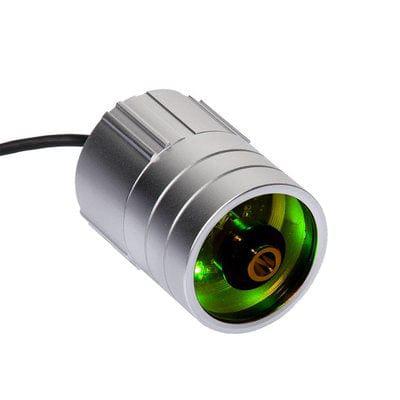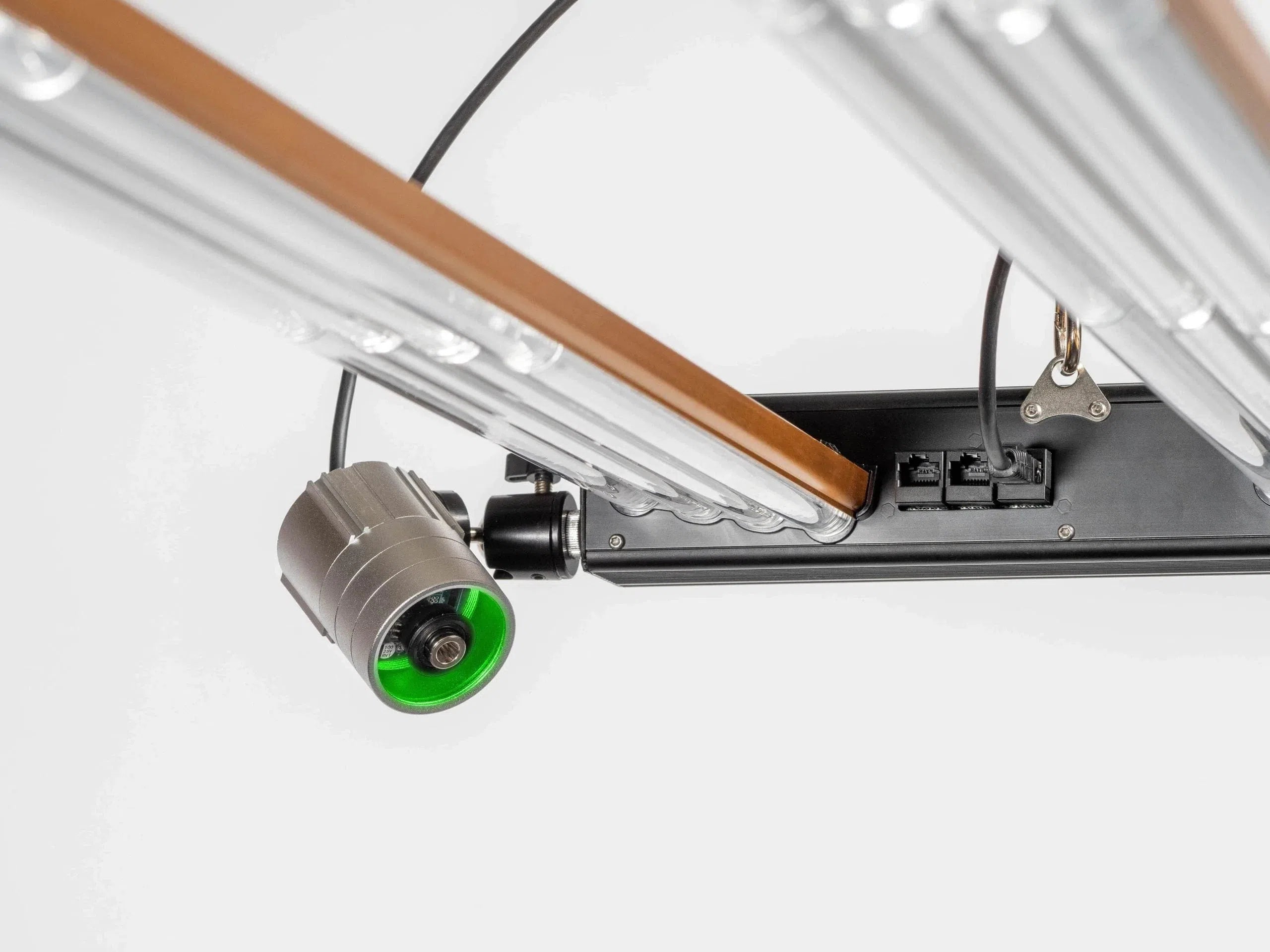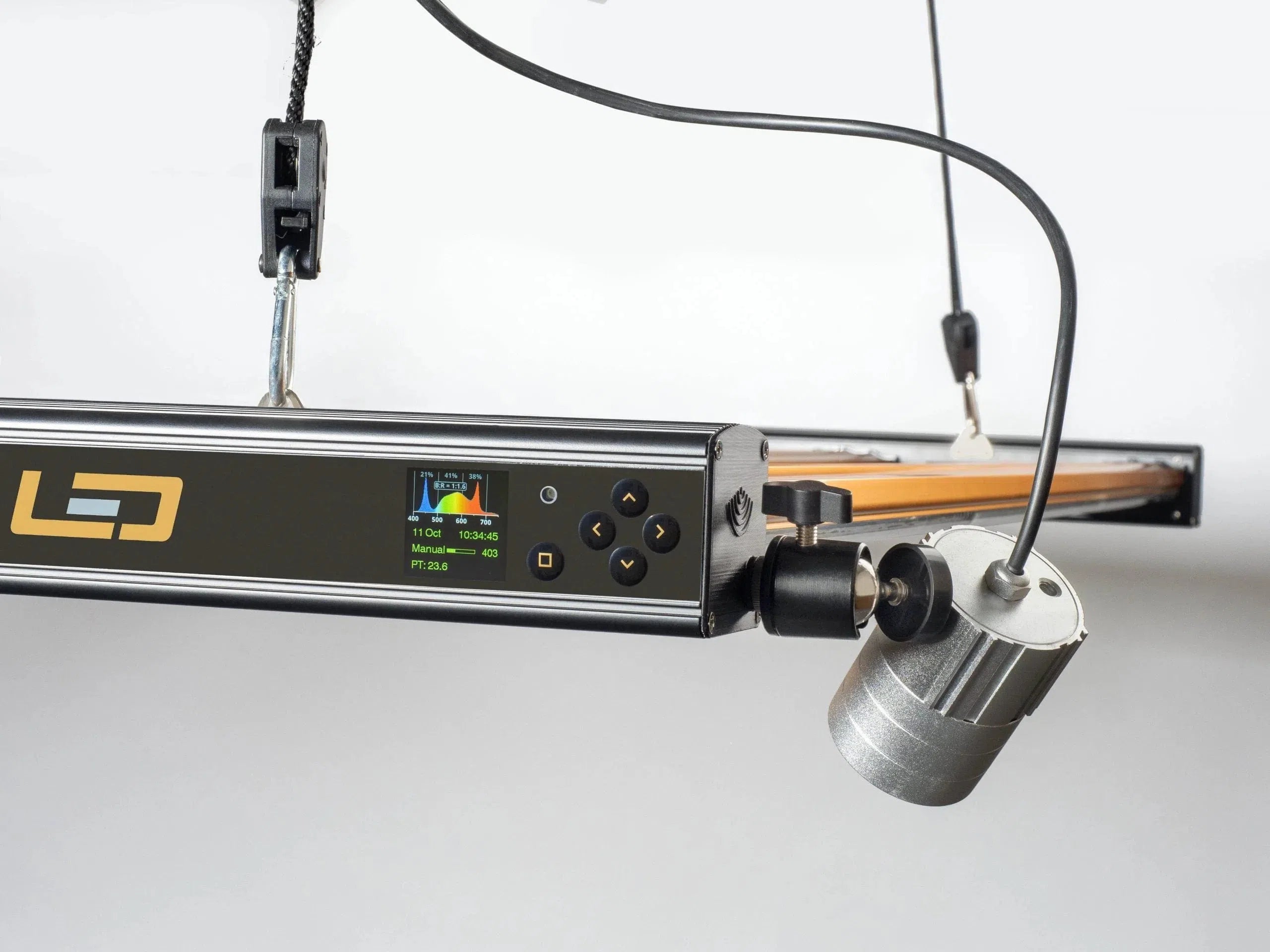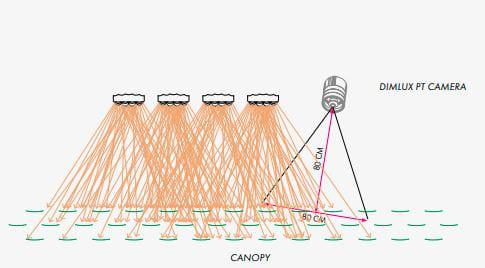Descrizione
This digital version come with a 3m long cable and works only with the Dimlux Extreme LED - the older analogue version does not. This digital camera also comes with a sexy mounting bracket to fix to your Dimlux LED.
GROWING PLANT TEMPERATURE AND LED
When growing with LED, the plant temperature is more important than ever, because the grower often thinks in terms of the cultivation method and schedules of HPS, and applies them to LED. This often results in poor growth due to the sub-optimal plant temperature. Growing at air temperature is a no-go when growing with LED. This was in fact already the case when growing with HPS, but with LED the importance has only increased.
The reason that the plant temperature is so important when growing with LED is that the LED fixtures do not emit infrared radiation like the vast majority of HPS fixtures. The infrared radiation in HPS cultivation ensures a considerable increase in plant temperature, and an ‘ideal’ air temperature has been attached to this over the years. This is actually wrong. The plant temperature should always be leading and the air temperature indirectly controls the plant temperature.
If cultivation with LED is done at the same air temperature as with HPS, the plant temperature will usually be too low and therefore the RuBisCo enzyme cannot work properly. The RuBisCo enzyme is less active and limits CO2 assimilation.
The plant temperature also depends on the spectrum of the LED lighting, the intensity, and the VPD. For example, green light will heat up the plant more than other colors. It is therefore not possible to indicate an ideal air temperature. A base value can be used and then adjusted based on the plant temperature until the ideal plant temperature is attained.
HOW SHOULD THE PLANT TEMPERATURE BE MEASURED?
The plant temperature should be measured over a large leaf surface area as possible so that a good average temperature is measured.
The parts of the plant that need to be measured are the parts that receive the most light from the assimilation lighting. Mounting the plant temperature camera at the same angle as the assimilation lighting results in the most accurate measurements. After all, photosynthesis takes place where the most light is absorbed.
With the Dimlux Xtreme LED with high penetration lens, the camera should be aimed such that it ‘sees’ the most foliage and the least amount of other stuff like soil. The sensor of the camera has a viewing angle of 50° which equates to, for example, a captured area of 1m in diameter at a distance of 1m.
WHAT IS THE DIFFERENCE THIS PLANT TEMPERATURE CAMERA AND A CHEAPER 30QUID INFRARED TEMPERATURE METER?
The plant temperature camera is made to measure the temperature with a wide field of view, and with an emissivity matched to that of plants. This ensures the most accurate measurement possible.
An infrared temperature meter is made to measure the temperature of the smallest possible spot diameter. This way, only the temperature of a single leaf can be measured, and not of a complete plant, or several plants. When measuring from a distance, measurements can also accidentally be taken from the lower leaf layers where less or no light reaches. The emissivity parameter of this type of meter is adjusted to building materials, and not to that of plants. For an accurate measurement, the result must be converted.
The plant temperature camera also monitors continuously and does not just provide a snapshot.
When used with the LED Xtreme series, the ideal plant temperature will be shown in the display. In addition, if the plant temperature is too low, the auxiliary lighting will flash blue, and if it’s too high, it will flash red. The grower will then be able to adjust the air temperature or VPD to achieve the ideal plant temperature.
The plant temperature does not only measure whether the plant is in its optimal range for photosynthesis, it’s also an indicator of whether the CO2 level is too high because of closed stomata. When the CO2 value is too high or the VPD is too high, the stomata may close, and the plant temperature will rise as a result. With the optical message of the plant temperature camera, the grower is informed of the situation. In the event of a water shortage, the plant temperature will also rise.







